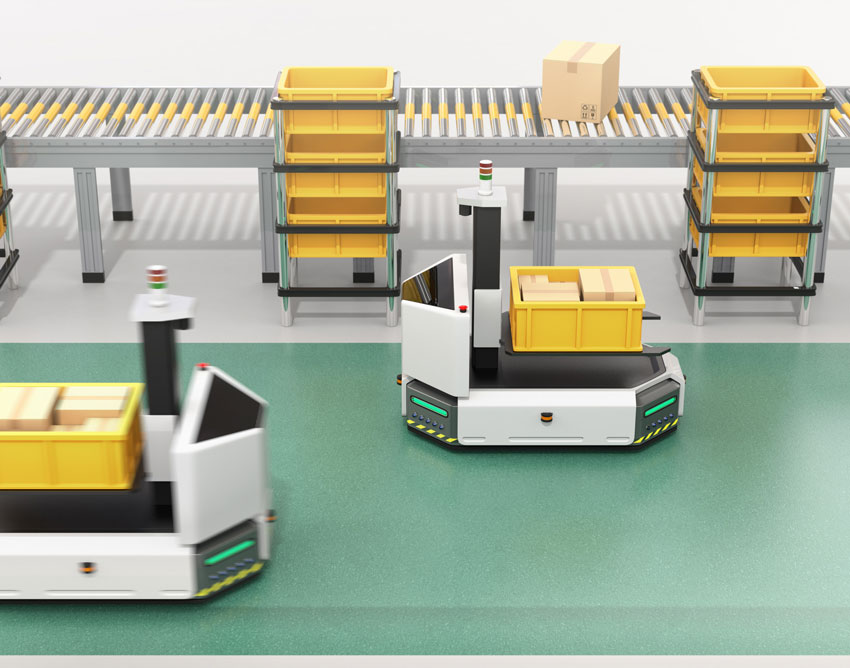I have been thinking about writing an article about AGV – AMR concepts for a long time, though this is a complicated issue due to the history and development of mobile robotics. Many people have insisted to me that they do not understand the differences between an AGV and an AMR and have asked me to write an article explaining them and putting some order in mobile robotics concepts.
I warn you, the goal of this article is not to settle down the definitive differences between AGVs and AMRs. The goal is to help you understand the current context with acronyms and consequently how to deal with them.
When I started working in this industry back in 2013, we only used the acronyms AGV or AGC (Automated Guided Cart, generally applied to mouse-type vehicles). At most, we could hear the word robot from a customer (although within the sector we never used it). Attention, this is important, at that time there were already mobile robots that did not depend on lines on the ground and that were flexible in their paths (for example those of Seegrid). In any case, back then we called every mobile robot an AGV.
And how did we get to the current situation? What has happened along the way? Well, mainly two things have happened:
- The prices of the technological components required by the AGVs began to decline rapidly.
- The appearance of new technologies that drastically improved the quality of the solutions: lithium batteries, safety lasers with more cases, safety PLCs, traction systems developed especially for AGVs and, above all, new localization solutions (not to be confused with navigation). In the latter case, we are mainly talking about 2D SLAM localization, also known as natural localization, mapping or by contours.
The price reduction had two successive consequences:
- Increase in demand, firstly, by the automotive sector and then by other sectors: FMCG (Fast Moving Consumer Goods: Food, Beverage, Pharma, Cosmetics, etc.), Equipment and later and in much greater extent eCommerce.
- Increase in supply: that is, new players began to appear throughout the world, but especially in China and Europe.
In this context, the veteran companies in the sector had not launched themselves into studying new technologies, but rather had taken advantage of the reduction in prices of technological components. This decision had led them to increase sales by also increasing the margin of those sales, so they felt quite comfortable.
Naturally, newcomers needed to differentiate themselves from veteram companies in order to break into the market. For this, they took advantage of the new technologies mentioned previously, in particular the SLAM localization. Some of them emphasized the differences from existing AGVs and started using new acronyms: AMR (Autonomous Mobile Robot), IAV (Intelligent Autonomous Vehicle), SAV (Smart Autonomous Vehicle), etc. Finally AMR was the most used new acronym.
What was the problem? Well, each newcomer assigned different features to the AMR acronym based on the features of its own robot. That is the reason why today nobody is very clear about the differences between AGVs and AMRs.
I think the only difference that 90% of people can agree on is that an AMR typically uses SLAM localization while an AGV uses other types of localization technologies. The rest of features will depend on who you ask!
Honestly, I think I almost always continue to use the acronym AGV, although I am trying to use more and more the words “mobile robot” or even “robot” to avoid confusion with both customers and suppliers.








